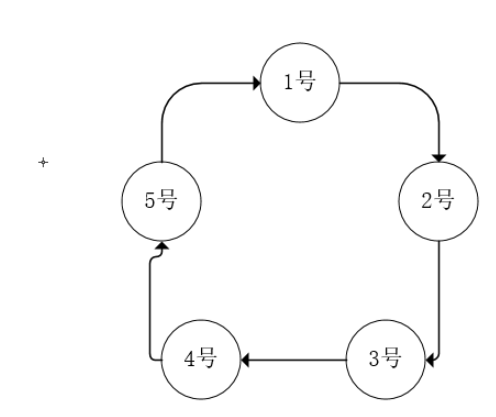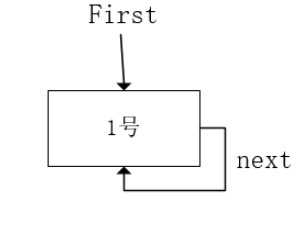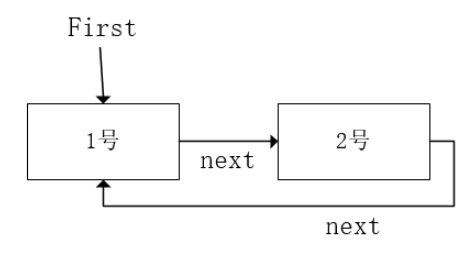
1. Original title of Joseph’s Question:
n children hold hands and form a circle. The person numbered k (1
2. Problem analysis:
According to the description of the problem, it is easy to think of using a one-way circular linked list to simulate it. First, a one-way circular linked list with n nodes is formed, and then node K starts counting from 1. When m is counted, the corresponding node is deleted from the linked list, and then counting starts from 1 from the next deleted node until all Nodes are deleted.

Assume that starting from the person numbered 1, each time the number is reported, the person 2 will be listed out. If there are $n= 5$ individuals, then $k=1,m=2$. Then the final result should be: 2, 4, 1, 5, 3.
1. Construction ideas:
First create the first node, point to it with the first pointer, and its next points to itself, as shown below:

Next, create a second node, point the next pointer of the first node to the second node, and point the next pointer of the second node to the first node, as follows As shown in the figure:

and so on, you can build a one-way circular linked list. When traversing, when the next of the node is equal to first, it means that the traversal is completed.
2. Code implementation:
Based on the above analysis, the following code can be written:
1 |
|
1. Idea:
First find the node where the counting starts, and use cur to record it, for example, from the kth starting number, then cur should point to node k; then find the previous node of cur and record it with pre; after finding these two nodes, start counting (m-1) times from cur, that is, cur and pre move at the same time (m-1) times, at this time cur points to the node to be deleted; print the node to be deleted, and then move cur to the next node after the deleted node, that is, cur = cur.next, the next of pre points to the new cur, that is, pre.next = cur.
2. Code implementation:
1 |
|
When the incoming parameters are k=1, m=2, n=5, the result of executing this method is the same as the above analysis. , the output sequence is 2,4,1,5,3.
The above is the detailed content of How to solve Joseph problem in java. For more information, please follow other related articles on the PHP Chinese website!




